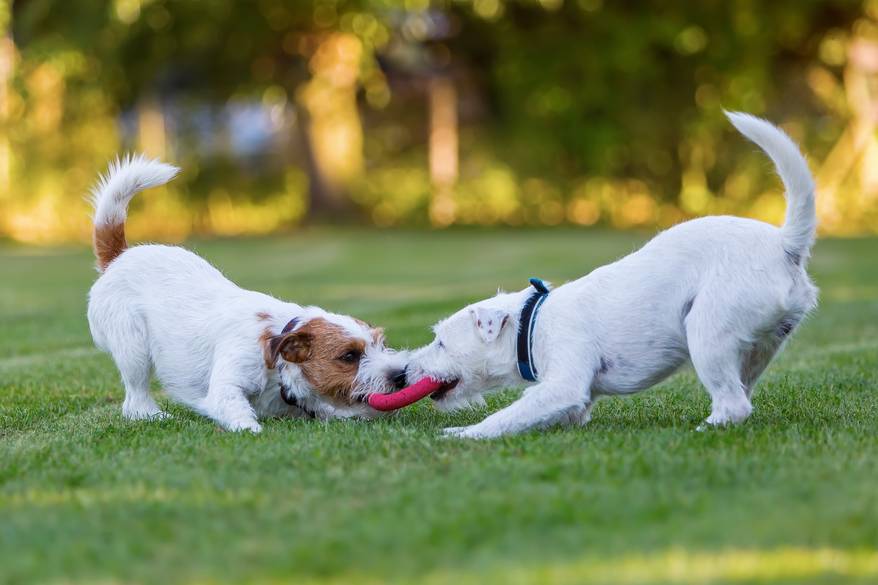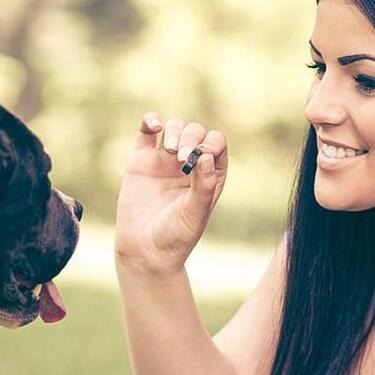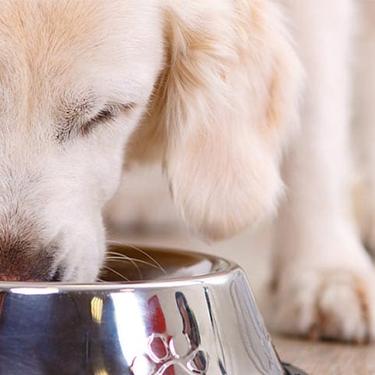
-
Find the right food for your pet
Take this quiz to see which food may be the best for your furry friend.
Find the right food for your pet
Take this quiz to see which food may be the best for your furry friend.
Featured products
 Adult 7+ Perfect Digestion Chicken, Whole Oats & Brown Rice Recipe Dog Food
Adult 7+ Perfect Digestion Chicken, Whole Oats & Brown Rice Recipe Dog FoodScience Diet's breakthrough nutrition supports ultimate digestive well-being & healthy microbiome for dogs age 7+
Shop Now Adult Healthy Cuisine Roasted Chicken, Carrots & Spinach Stew Dog Food
Adult Healthy Cuisine Roasted Chicken, Carrots & Spinach Stew Dog FoodDelicious roasted chicken paired with tender vegetables in a succulent stew
Shop Now Small & Mini Savory Stew with Chicken & Vegetables Dog Food
Small & Mini Savory Stew with Chicken & Vegetables Dog FoodA delicious complement to the nutrition of Science Diet Small & Mini 7+ dog food
Shop NowFeatured products
 Adult Savory Entrée Can Variety Pack Cat Food
Adult Savory Entrée Can Variety Pack Cat FoodPrecisely balanced nutrition with the delicious taste of savory minced chicken to help fuel the energy needs of cats during the prime of their life
Shop Now Adult 7+ Tender Tuna Dinner Cat Food
Adult 7+ Tender Tuna Dinner Cat FoodWith delicious chunks in a decadent gravy
Shop Now Adult 7+ Senior Vitality Chicken & Vegetable Stew Cat Food
Adult 7+ Senior Vitality Chicken & Vegetable Stew Cat FoodImproves Everyday Ability to Get Up & Go
Shop Now -
Dog
- Dog Tips & Articles
-
Health Category
- Weight
- Food & Environmental Sensitivities
- Urinary
- Digestive
- Joint
- Kidney
-
Life Stage
- Puppy Nutrition
- Adult Nutrition
- Senior Nutrition
Cat
- Cat Tips & Articles
-
Health Category
- Weight
- Skin & Food Sensitivities
- Urinary
- Digestive
- Kidney
-
Life Stage
- Kitten Nutrition
- Adult Nutrition
Featured articles
 Why Are Dogs and Cats So Cute?
Why Are Dogs and Cats So Cute?If waggy puppy dog tails and furry kitten yawns make you swoon, you're not alone. Why are cats so cute? And, dogs too! Let's find out!
Read More Does My Pet Hate Me?
Does My Pet Hate Me?Learn tips for bonding with your pet if you've ever thought, 'My dog doesn't like me, or 'Why do I have a standoffish cat?'
Read More Do Dogs and Cats have Belly Buttons?
Do Dogs and Cats have Belly Buttons?Learn whether cats & dogs have belly buttons like humans, what the function is, and if there are any health concerns associated with it.
Read More -


By just two weeks old, puppies are typically happily wrestling with their litter mates. While it might just look like fur balls having fun, this early play is critical to a puppy's social development. Dogs playing together from such a young age teaches them communication and self-control. After all, if you bite one of your litter mates too hard he won't play with you anymore.
As puppies age and grow, they don't lose their playful spirit. Give your dog the opportunity to make four-legged friends, but be vigilant. It's up to you to supervise and make sure your pup is enjoying good-natured play and isn't getting too aggressive with other dogs.
Ready for Fun
Here are a few signals dogs use to show other pups they're ready to play:
- Dropping into a "play bow": You might see your dog put his front legs on the ground and his back end in the air as he faces his pal. Really exuberant dogs might even slap their front legs on the ground to show they're ready to romp.
- Taking turns: Dogs playing together will sometimes play a form of tag, where they take turns chasing each other.
- A smile: You know when your dog is happy. You might actually see him looking as if he's grinning as he races around a dog park with a friend.
- Exaggerated growling or barking: Puppies "play growl" and your dog might not have outgrown this puppy behavior. It could sound scary, but if other behaviors show you that your dog and his friend are just having fun then don't be alarmed.
- Play Biting: This is typically one of the hardest signs for pet parents to accept because we associate biting as a negative outside of eating, but this is simply what dogs do. It's not uncommon for one dog to submit and lie on his back, while the other dog nips at his ears or nose. Both dogs may bear their teeth, but as long as there isn't aggressive growling, yelps or whimpers your dogs are probably just engaging in playful behavior. If you notice one dog isn't feeling it and looks like he'd rather be left alone, it might be best to separate them for a time. This can be common with puppies trying to engage in play with an older dog that just wants to take a nap.

Crossing the Line
When does a line get crossed between play fighting and a dog actually exhibiting aggressive behavior?
Signs of dog aggression include raised hackles, stiffness, snapping, or lunging. If either dog shows aggression, separate them immediately. But be careful: Never get between two fighting dogs.
Dogs can also become territorial, whether it's toward a place, food, a toy or a person. If you notice one of your dogs becoming territorial over something any time another dog comes around it, it is best to separate them before aggressive behaviors begin. Then, work with an obedience trainer to try and get to the bottom of this behavior and train it out of him. This can often happen when introducing a new dog into the house with an older one. The older one is not used to having to share his toys or your love, so it might take a little extra training on your end to get him used to the idea of sharing his home.
If you have a dog that is aggressive, it simply might be best for you to avoid situations that may cause your dog to fight. But if you have had a dog that has shown signs of aggression in the past, you should be on alert for his whole life. A relapse can occur at any point. Consult your veterinarian if this behavior is regular. You might also need to consult a behavior trainer that can train your dog the right and wrong ways to act if you are struggling to train him to play nice.


Tasty Tips
Raise a Playful Pup
The most important thing you can do to keep your dog from becoming fearful or aggressive toward other dogs is to start socialization early. By regularly meeting and interacting with other dogs, you may lessen the chance that he'll react negatively to other dogs as he ages. Get started by taking an obedience class with your dog, which will give him regular interaction with other puppies. You can also meet new canine pals on walks, by setting up play dates with neighbors, or visiting a dog park. Make sure your dog is comfortable in these situations. You might not be helping your dog become more comfortable around other animals if he's scared or is bullied by another dog. Keep interactions positive and don't push your dog into a situation that he's not comfortable.
Take a Break
Sometimes dogs can play too much and get too riled up. When the roughhousing gets too intense, separate them so no one gets hurt. Giving them something to chew on can distract the dogs from each other. Also, consider separating them briefly. Put them in "timeout" by ordering them to lay down for a few minutes. If that doesn't work, simply separating the dogs by a door for 10 minutes or so might get them to calm down when they're reunited.
Watching happy dogs at play is a joy and something to be encouraged. Do your best to find ways to let your dog interact with other dogs at least on a weekly basis. Even if they don't engage in play, and just sniff each other, it is helpful for their development and a good way to encourage good behavior.


Kara Murphy is a freelance writer and pet parent who lives in Erie, Pa. She has a goldendoodle named Maddie.
Related products
Related articles

Proper nutrition for your pregnant or nursing dog is vital to her and her puppy's health. Learn what you should do provide her with the proper nutrients.

Learn about choosing the right dog food to help ensure your adult dog will receive the correct balance of nutrition.

Learn the the dangers of feeding your dog chocolate, which types are most dangerous, and what to do if you discover that they have consumed chocolate.

Learn how today's wet dog food blends have gotten a face lift, and how you'll provide your dog the nutrition he needs in the form he loves.

Put your dog on a diet without them knowing
Our low calorie formula helps you control your dog's weight. It's packed with high-quality protein for building lean muscles, and made with purposeful ingredients for a flavorful, nutritious meal. Clinically proven antioxidants, Vitamin C+E, help promote a healthy immune system.
Put your dog on a diet without them knowing
Our low calorie formula helps you control your dog's weight. It's packed with high-quality protein for building lean muscles, and made with purposeful ingredients for a flavorful, nutritious meal. Clinically proven antioxidants, Vitamin C+E, help promote a healthy immune system.

